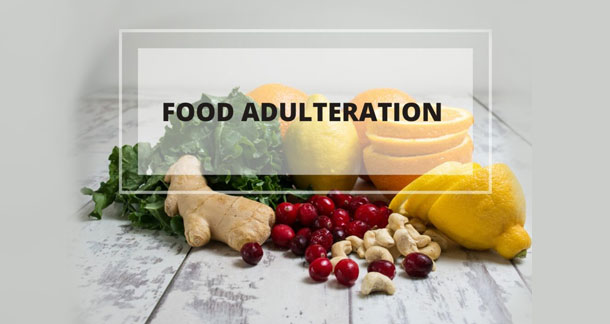Food Adulteration

Food Adulteration is the process of deliberately adding or removing a certain substance from food to make it less nutritious or lower quality than it should be. These can include adding chemical diluting food with water or adding a filter to increase the volume of food. Adulteration in milk is a process of adding foreign substances to milk to increase its volume or make it appear more attractive. Common adulteration included water, starch, sugar urea detergents, and vegetable oil. Adulteration in milk can be dangerous to health as it certain harmful bacteria and chemicals that can cause food poisoning and other health problems.
Adulteration in Spices
Common impurity includes sand and Olirt sawdust stretch.
How to find contaminants in Spices
– Visual inspection
Look for only foreign objects’ discoloration or unusual order in the spice.
-Taste test
Take a small sample of the spice and test it. If the taste differs then it may be an adult action chemical analysis have a laboratory Test the Spices for any substance.
-Thin layer chromatography (TLC)
This test is used to detect adulteration in species by separating the Components of the Sample and comparing them to a known one! Standard.
– High-performance Liquid Chromatography (HPLC)
This test is used to detect adulteration in Spices by separating the components.
-GAS chromatography
This is also the same technique but in advanced shape.
How to check adulteration in juices
Chemical Analysis
Acidity test
This test is used to detect the presence of acids in juices. It was done by adding a few drops of phenolphthalein indicator to the juice sample. If the juices are acidic will turn pink or red.
Refractometer test
This test is used to detect the presence of sugar in juices. It’s done by measuring the refractive index of the juice sample.
Brix test
This test is used to detect the presence of sugar in juices.
Formaldehyde taste
This test is used to detect the presence of formaldehyde in Juices.
PH test
This test is used to detect the pH of Juice. Generally, mango juice has a pH of around 3.5 to 4.5. the pH of orange Juice is 3.3 to 4.2.
